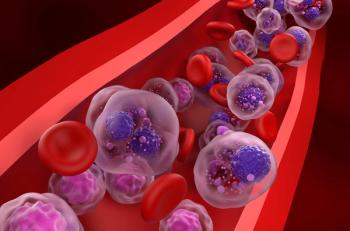
Golidocitinib May Be Effective for The Most Difficult-To-Treat Subtypes of Peripheral T-cell Lymphoma
Approximately 50% of patients with refractory or relapsed disease achieved complete response following treatment with the Janus kinase 1 (JAK1) inhibitor.
Pharmacy Times welcomes back Xiaolin Zhang, PhD, Founder, CEO and Chairman of Dizal Pharmaceutical Co., Ltd, and adjunct professor at Peking University in China, who discusses the safety and efficacy of golidocitinib for relapsed or refractory peripheral T-cell lymphoma and shares his hopes that treatment will soon be available as a monotherapy or adjunct to standard of care. Zhang presented these findings at the 2023 American Society of Clinical Oncology (ASCO) Annual Meeting in Chicago, Illinois, June 2 to 6.
PT Staff: Can you discuss safety and efficacy findings from JACKPOT8 Part B (evaluating golidocitinib for relapsed or refractory peripheral T-cell lymphoma?
Xiaolin Zhang, PhD: Of course! What is most unique about golidocitinib is [that] it is actually has good antitumor efficacy in different subtypes of peripheral T-cell lymphoma (PTCL), which is a group of a heterogeneous diseases. There are different subtypes that often respond very differently to different therapies. And the one that is most difficult to treat is subtype PTCL-NOS (not otherwise specified). It is essentially kind of a bag of “not this, not that;” kind of a bag of everything that we don't know about essentially, so it’s called NOS.
Now, this group of patients, the PTCL-NOS subtype, tend to not respond to anything that well. However, in our study, this group responded very well. We got observed response in NOS and AITO (angioimmunoblastic T-cell lymphoma). These are the 2 main subtypes that we've got an almost equal response rate (close to 50%). Overall, among all the subtypes together, we had a response rate of around the 44%. But the most encouraging is actually that about 50% had, what we call, complete response (CR). And these are the responses we really want to have because these are the patients that, as I said, tend to last very long.
So, right now, our follow up is almost 7 months. So on the whole, duration of response (DOR) and progression-free survival (PFS) and overall survival (OS) are not mature yet. But even [being] close to 7 months of follow up, these results are already better than the current variable treatment therapies. So we're very encouraged about it.
Now, in terms of safety, most of the safety is hematological in nature; many of them are related to the disease. And because it is, after all, an hematological malignancy, but the overall safety profile is very behind most of the patients. Very few (I think this if I recall correctly, less than 7%) of patients had to terminate treatment because of adverse effects (AE). So if you measure the overall [number of] patients who can stay on the treatment— who do not have the dropout (which is what we call the dose intensity and [which is] kind of the parameter we measure what was, in those days, close to 100%—very few patients had to drop out because of AE.
Another thing is infection. Again, this is this is mainly related to the disease itself, and it is a disease that affects the immune cells. So, [patients] must actively avoid infection, especially respiratory function refraction, and some viral infection, [which] is second finding from our study, and clinically, this can be effectively managed [with] prophylactic antifungal treatment, which is a common practice now—some of the vaccines are widely used, especially in the United States.
So, overall, the hematological AEs are infection-related AEs. These are the ones that are common for the disease, and doctors very comfortable how to handle them. So, overall that safety profile is quite acceptable.
PT Staff: How could oncology pharmacists implement it as part of their standard treatment regimen for patients with r/r PTCL?
Xiaolin Zhang, PhD: We intend to file for registration before the end of the year. And we hope it will be given… well it does have accelerated approval and the Fast Track Designation, so we hope it can be available to patients sooner into terms of clinical usage.
It will be a single dose. It is an oral drug 150 mg 3d, that the patient should be treated with as a monotherapy until disease progresses or [the patient has] some AEs where the doctors thinks that the treatment should be stopped. It is, as I said, an oral drug. And as of now the half-life is once daily, so it is very easy to use for patients.
PT Staff: Do you have any parting words that you’d like to share?
Xiaolin Zhang, PhD: Yes. What we release during ASCO is the first pivotal study. Obviously, we have other studies ongoing. Most excitingly, we have an ongoing study as well, [where] we think that (golidocitinib), either as a monotherapy or in combination with current standard of care, could bring significant benefits to the patients.
Now, we are hoping— we'll of course need more study and clinical evidence to support it—we're hoping that we could replace some of the chemotherapy, or at least decrease some of the dose of chemotherapy that is desirable to move to a chemotherapy-free regimen, given the horrendous toxicities associated with chemotherapy. So there is an additional (first-class study) of second-line r/r patients that is ongoing. We also have some other study results we're going to report in the coming medical conference. We also saw some very encouraging results in a maintenance setting as well. So stay tuned.
Newsletter
Stay informed on drug updates, treatment guidelines, and pharmacy practice trends—subscribe to Pharmacy Times for weekly clinical insights.






































































































































































































